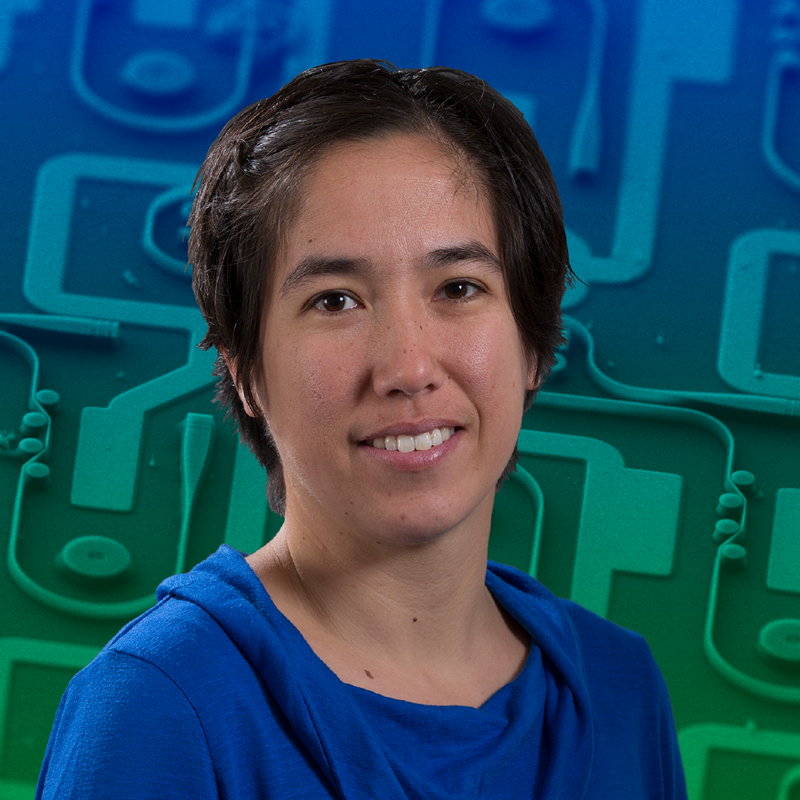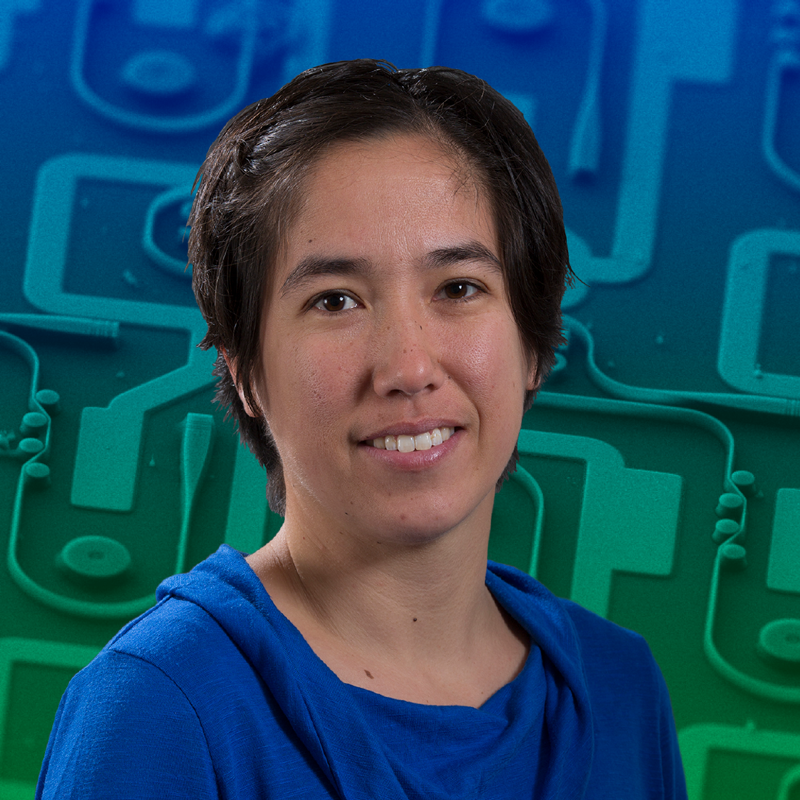Q&A: Defects Wanted; Apply Here
Kai-Mei Fu very nearly quit academia. As an undergraduate, Fu fell in love with quantum physics after a brief introduction to the topic in an engineering class. She went on to devour physics courses, but an unpleasant undergraduate research experience left her questioning whether her future lay in the field or somewhere else. Taking a year off to explore her options—she spent the time teaching math in Singapore—Fu found herself seeking out physics conferences and researchers and decided to give physics a second chance. (She advises any undergraduate with a sub-par research experience to reconsider their research topic or group environment before ditching research entirely.)
Now a professor at the University of Washington in Seattle, Fu creates defects in crystal lattices—by removing an atom from the crystal or by adding one in. She then studies the defects’ quantum properties. She jokingly calls her research “defective physics,” a name she admits doesn’t look great on funding applications. Physics spoke to Fu to find out more about her quantum crystal defects, their potential uses, and why she thinks researchers in her field could benefit from more collaborative efforts.
–Katherine Wright
Normally researchers try to avoid having defects in their materials, but you actively invite them in. Why is that?
Absent any defects, charge carriers—such as electrons or holes—can often freely roam through a material. But by adding in a defect, we can confine the carriers and create a localized electronic state. We can then take advantage of that localized state, manipulating it for quantum information applications.
Like what?
One use of defects is in something called a quantum information network, which is an array of entangled quantum objects. Such a network could be used to distribute encryption keys for secure communication or to perform quantum computation.
To make a quantum network we need to access one of the defect’s quantum-mechanical degrees of freedom. In my group, the degree of freedom we work with is spin. We entangle the defect’s spin with a photon, which can then interfere with other spin-entangled photons. This process potentially allows us to entangle multiple defects. The goal—and this hasn't happened yet—is to entangle a whole series of defects this way.
How easy is it to make a defect?
It's relatively easy. The challenge is creating a defect that can be isolated from other kinds of existing defects. For that, the material needs to be pure—roughly one defect per cubic micrometer—which at the moment typically means using silicon or diamond. Other materials are too dirty and contain unwanted defects that can mask the signal from the quantum defect or change its properties.
The favored defect—and one that my group studies—is that for a nitrogen-vacancy (NV) center in diamond, which is typically created by implanting a nitrogen ion into a diamond lattice. The process isn’t 100% deterministic—not every implanted ion produces an NV center—but we can create them with high probability.
Why are NV centers popular?
Pure diamond is easy to get ahold of and single defects are easy to make. But NV centers also have promising properties for applications. They can store quantum information for a relatively long time, and their spins can be entangled with photons, making them useful for creating quantum networks. But they aren’t perfect. For example, the probability of successfully entangling an NV center’s spin with a photon is only 3%. There is definitely room for improvement.
Are there any promising alternative defect candidates?
There isn’t currently one defect that is better overall than the NV center. There are defects that hold quantum information for longer, and there are defects that couple better to photons whose wavelengths are compatible with existing telecom technologies. But overall, the NV center is still the best. That said, I’m sure that there is a superior defect out there; it’s just a matter of finding it. One possible alternative that my group is looking into are defects made by adding “donor” atoms to zinc oxide. Each donor has a net spin.
What have you found?
Our measurements show that the success rate for entangling this defect’s spin with a photon could be about 90%, about 30 times better than for NV centers. This higher rate potentially makes the zinc-oxide defect a better candidate for creating a quantum network, although it’s still a relatively unstudied defect so there may be unanticipated challenges in using it.
How close is the field to realizing a quantum network device?
There is a group in Europe that will likely soon demonstrate a 4-node defect network. But a useful network would need thousands of nodes, and we don’t currently have a way to scale up to that goal.
To succeed we will need a more concentrated research effort, like that seen in particle physics or in gravitational-wave detection. The field of quantum information research is essentially a community of individual investigators each working on different problems. To take the leap to the next step, I think we instead need to come together and work as larger teams on unified goals.
Katherine Wright is a Senior Editor for Physics.
Know a physicist with a knack for explaining their research to others? Write to physics@aps.org. All interviews are edited for brevity and clarity.





